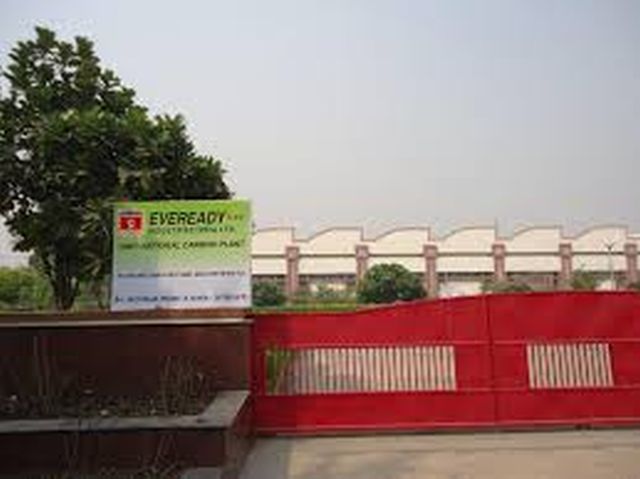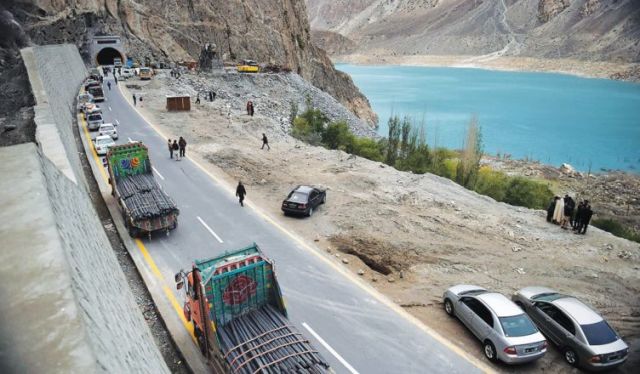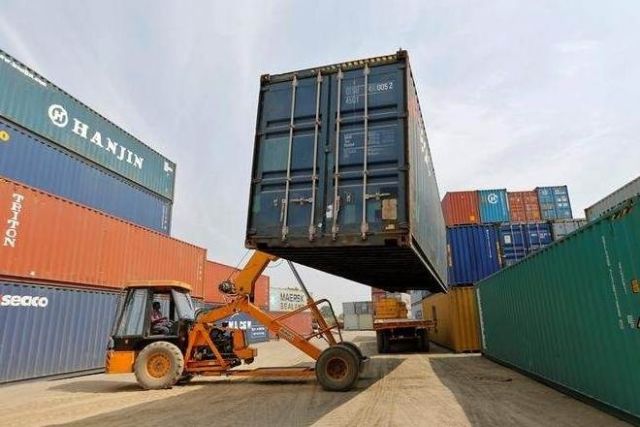
by Editor | May 25, 2021 | Business, Emerging Businesses, SMEs
 Mumbai : The business optimism in India has deteriorated with the country ranking sixth globally on the optimism index in the first quarter of 2018, said Grant Thornton’s International Business Report (IBR) on Tuesday.
Mumbai : The business optimism in India has deteriorated with the country ranking sixth globally on the optimism index in the first quarter of 2018, said Grant Thornton’s International Business Report (IBR) on Tuesday.
According to the quarterly global business survey, India has been topping the chart since the new government came into power in 2014.
“However, the confidence has shaken since Q3 2017 with weakening currency and a surge in oil prices (Q3- 7th, Q4- 5th 2017),” Grant Thornton said in a statement.
“In contrast, globally, the business optimism is at an all-time high. The IBR finds that in Q1 2018, global business optimism stands at net 61 per cent – the highest figure recorded in 15 years of research.”
As per the report, Indian businesses have been citing regulations and red tape, availability of skilled workforce, lack of ICT infrastructure and shortage of finance as the biggest growth constraints.
“Even after India’s significant jump in World Bank’s Ease of Doing Business ranking, the country still continues to rank 1st or 2nd in quoting these reasons as the key hurdles for growth,” the statement said.
The report pointed out that underlying pessimism is reflected in other parameters as well including revenue, selling prices, profitability, employment and exports expectations.
The scale and the report are prepared based on the results of a quarterly global business survey of 2,500 businesses in 37 economies.
“The reversal in sentiment amongst mid-sized business in India in the last 3 quarters is startling and I hope policy makers will sit up and take note,” Vishesh C. Chandiok, CEO, Grant Thornton India LLP was quoted as saying in the statement.
“With oil climbing, and India firmly in an election year, we ought to brace for a volatile economic environment in the days ahead. Export oriented businesses should see better days, finally.”
—IANS

by Editor | May 25, 2021 | Business, Business Ideas, Entrepreneurship, SMEs, Startup Basics, Startup Financing, Your Business Plan
 By Simmi Sareen,
By Simmi Sareen,
New Delhi : Scaling up a business is hard work. While launching a start-up and raising initial seed capital is tough, things get more complex once you are past the proof-of-concept stage and are set to scale. The funds to start a business are almost always equity capital, but a business looking to grow is also looking to choose between debt and equity.
For most entrepreneurs, this is their first time dealing with a lender and it can get confusing. Here are the top five questions start-up founders have as they set out to look for their first loan.
* Why should I take a loan?
Because it’s cheaper. Equity capital is dilutive, which means that investors get a share in all your future profits and future valuation growth and expect to make multi-fold returns if things go well.
A loan, on the other hand, has a fixed interest rate and thus will always be cheaper than equity. So whether you take a 12 per cent bank loan or an 18 per cent unsecured business loan, that’s the final cost of the loan to you.
* What kind of loan can I get?
Start-ups usually take loans for working capital. As the business expands, precious cash gets stuck in inventory and receivables. The three most common forms of working capital debt are:
Unsecured Business Loan: This is what lenders call a term loan in which you get a certain amount of loan. Just like a home loan, you pay a monthly EMI.
Invoice Discounting: Receivables are likely your biggest cash drain. In invoice discounting, the lender pays you as soon as you raise the invoice. When your customer pays 30-60 days later, the lender takes his money back. At this point, you have more invoices to discount and hence the cycle continues. This is useful for B2B start-ups.
Cash credit limits and overdrafts: Offered by banks as a line of credit so you can use the loan whenever you need. Typically for businesses that are a few years old and can potentially offer a collateral security.
* When can I get a loan?
Lenders vary in their perception of how soon a start-up can get a loan. But irrespective of which lender you go to, you need to have some cash flows. Remember that the loan has to be repaid, with interest, on time — so the more visibility you have on your future cash flows, the easier it is for you to get a loan. At least six months post-revenue is a good benchmark.
* How much loan can I get?
It depends on your working capital cycle, especially when you are looking at invoice discounting or other cash flow-backed loans. We have found that 1-2 months of current revenue run rate is a good benchmark for most start-ups.
* What do I need to do?
Lending needs paper since lenders won’t spend months with you like equity investors. They need to analyse documents to build trust in your business and your ability to repay the loan. Lenders are only looking for documents you have easy access to; financials, tax returns and bank statements.
Also, whether or not you are planning to take a new loan today, keep your credit history clean. Every lender does a credit check on both the company and the founders. With the credit report in shape and armed with documents that show cash flows your business can make, you will be all set to get your first business loan.
(Simmi Sareen is CEO and Founder of Loans4SME. The views expressed are personal)
—IANS

by Editor | May 25, 2021 | Business, Large Enterprise
 Kolkata : Dry cell batteries maker Eveready Industries India Ltd (EIIL) on Monday said it is entering into the confectionery business with its brand “Jollies” and is also hoping to become a major player in the market in the next 3-5 years.
Kolkata : Dry cell batteries maker Eveready Industries India Ltd (EIIL) on Monday said it is entering into the confectionery business with its brand “Jollies” and is also hoping to become a major player in the market in the next 3-5 years.
According to it, the confectionery market is estimated at over Rs 9,000 crore and in the first phase, the brand will be launched in the fruit chew segment which is estimated to be around Rs 400 crore.
“The segment is growing at a rapid pace. The company believes that the fast growing fruit chew segment will double in the next 3-4 years and expects to become a significant player in this segment by making this under-penetrated category available across urban and rural India through its robust deep distribution network,” it said in a statement.
The city-based company is working on an asset light model and hopes it can add significant turnover and profitability with entry into this segment.
Company’s Managing Director Amritanshu Khaitan said “The brand is the first step to scale up our FMCG portfolio of products. We believe that priced at Re.1, Jollies fruit chew will be an attractive offering to Indian consumers who prefer healthier choices.”
According to him, candies are a mass market product and can be carried in the Eveready vans reaching a million outlets.
“This brings in a major competitive advantage for us and we believe we can become a major player in the fast growing confectionery market in the next 3-5 years with only investments required for branding,” he said.
With extensive distribution, confectionery would provide an opportunity to not only compliment the current basket of products and give an opportunity to offer value added products to the company’s vast up-country distribution, the company aid.
The brand would also provide a offering to rural consumers who have limited access to branded confectionery.
—IANS

by Editor | May 25, 2021 | Business, Economy, Emerging Businesses, Large Enterprise, Markets, Medium Enterprise, News, Politics, SMEs
 By Ranjana Narayan,
By Ranjana Narayan,
New Delhi : As India prepares to celebrate the silver jubilee of its partnership with ASEAN in a big way, a key border trade link with Myanmar, the closest neighbour of the vibrant Southeast Asian bloc, continues to be hobbled by infrastructure and other issues — 22 years after it was launched.
India’s border trade with Myanmar takes place mainly through Moreh, in Manipur’s Chandel district, which links with Tamu, located in Sagaing in northwest Myanmar. There is another border trade point through Zowkhathar in Mizoram with the corresponding point Rhi in Myanmar, but Moreh is the biggest border trade point.
Though India and Myanmar signed the border trade agreement on January 21, 1994, and it was made operational the following year, the bilateral border trade figure stands at $50 million — a poor comparison to Myanmar’s trade with China, which was around $6 billion last year.
Myanmar has four border trading points with China, of which the one at Muse, in northern Shan state, is the biggest. Around 80 per cent of Myanmar’s formal overland trade with China passes through this post that links with Ruili, in China’s Yunnan province.
While China has pumped in massive amounts of money to build modern infrastructure at Ruili and also in Yunnan province to boost connectivity with Myanmar, the infrastructure at the India-Myanmar border post, Moreh, is still inadequate. An Integrated Check Post (ICP) at Moreh has been in the works for the past 10 years and is yet to be completed.
Besides the difficult terrain and militancy that adversely affect border trade at Moreh-Tamu, India in December 2015 officially put an end to the barter system, or trading of goods without exchange of money. According to Myanmarese media reports, the ending of barter trade “killed” India-Myanmar border trade.
Professor Priyoranjan Singh, an economist at Manipur University, says that since the Government of India notification ending barter trade, “the present state is that formal trade, or normal official trade, stands at zero, and informal, or illegal trade — or head load trade — is going on”.
He told IANS that there was a “huge information gap” between the two sides, including among the traders. “Our own Indian customs agency does not know the customs duty that Myanmar imposes on Indian goods,” he said.
Singh, who has expertise in the field, feels that “seriousness is not there” in India on boosting border trade, while China exhibits “huge seriousness, which is something Myanmar likes”.
Gautam Mukhopadhyay, former Indian envoy to Myanmar, says there are reasons for China’s border trade with Myanmar being more robust than India.
“First, Yunnan is a much better connected and more productive gateway from China to Myanmar than the Northeast of India to Myanmar. Secondly, for any Northeastern state of India to match China in cross-border trade, the region has to become a net producer than consumer, and better connected to the main productive regions of India,” Mukhopadhyay said.
He said efforts were being made in that direction. “But it will take some time and better coordination between our development, commercial and strategic policies for us to match China.”
He said the government has tried to address the issue of low volumes by liberalising cross-border trade and moving to the Most Favoured Nation trade status, but there was a “need for a reliable system to determine countries of origin of goods”. A lot of goods from China are available in the markets in the region.
Economist Ram Upendra Das, head of the Centre for Regional Trade, an autonomous institute under the Commerce Ministry, in his report on ‘Enhancing India-Myanmar border trade’ released last year by the ministry, says: “A major cause of discontent among local traders is that the pace of construction of Moreh ICP is very slow.”
Das told IANS that “it is very important that border trade is conducted through formal channels”, which would help increase the volume as India has slashed the tariff in a majority of items to zero, which means no border tax.
“There is an information gap and lack of understanding among the traders” on the benefits of conducting trade through the formal channel, he said. Informal trade would also give rise to corruption, in the form of levy imposed by militant groups and bribes, he added.
On China developing the infrastructure in Myanmar, Mukhopadhyay says: “China has made huge investments into power and extractive industries for its own interests, but very little into employment-intensive industries that really benefit Myanmar. China has been able to convert its more selfish investments into greater political clout than India. This is something we need to think about.”
(Ranjana Narayan can be contacted at ranjana.n@ians.in)
—IANS

by Editor | May 25, 2021 | Opinions
 By Amit Kapoor & Chirag Yadav,
By Amit Kapoor & Chirag Yadav,
In a massive relief to Indian exporters, the government announced liberal incentives of Rs 8,450 crore ($1.3 billion) in its mid-term review of the five-year foreign trade policy (FTP) that was rolled out in 2015 and aimed at increasing the export of goods and services to $900 billion by 2020. Exports, meanwhile, declined from $468 billion to $437 billion between 2014-15 and 2016-17.
In fact, India’s external trade performance has grown to be so acute that the current account deficit in the first quarter of the current fiscal year reached a four-year high of 2.6 percent.
What is more worrisome is that this trend is continuing despite favourable trade conditions in the global markets. Only domestic factors can explain the widening trade deficit. Clearly, the uncertainty surrounding the implementation of the Goods and Services tax (GST) has had a major role to play. Data due this month will show whether the situation has improved in the second quarter.
However, the chances of any significant improvement remain bleak as issues in processing of refunds to exporters under GST has been affecting trading activities. Therefore, the sops given in the mid-term review should help in pumping up exports to an extent.
Basically, labour-intensive sectors under the Merchandise Exports from India Scheme and Services Export from India Scheme, which were introduced in the FTP, were given an incentive raise of two percent each. Under the scheme, exporters are granted credit scrips based on the said percentage of the total value of their exports. These scrips can be used for payment of duties on procurement of further inputs. Additional incentives of two percent are expected to boost the subdued export activity of the last few quarters.
However, even though such an incentive was crucial in the short run given the circumstances, it always remains pertinent to ask if we are doing enough. After all, no country in history has sustained a growth rate of seven per cent without an export growth of 15 per cent or more and, according to World Bank data, Indian export growth of goods and services has not even crossed 10 per cent since 2011. Therefore, there seem to be larger structural issues at work that are impeding the growth of India’s external sector.
In order to further reinforce this fact, we can look into the long-term trends of India’s leading export sectors — gems and jewellery, leather and textile. It is quite disconcerting to realise that India’s comparative advantage in all of these sectors is nowhere close to that at the turn of the century. Moreover, all of these sectors are highly labour-intensive and losing comparative advantage in them is quite inimical to the economy’s employment-generating capacity.
A common argument made to improve India’s trade competitiveness is that the rupee is strong and needs to be depreciated to make exports competitive in the world markets. However, this argument falls flat in the face of recent trends in both the exchange rate and the real effective exchange rate over the last few months. Both of these indices have remained stable in the last fiscal and, in fact, fell slightly in August while exports continued to show a downward trend. There was not much strength in the argument anyway, since export competitiveness is not defined by currency but by productivity of the workforce.
Indian policymakers need to recognise that the trade challenge for India is structural in nature and cannot be done away with quick-fix solutions. Cost incentives are an acceptable approach to deal with immediate challenges like the impact of GST, but they need to be supplemented with more long-term solutions. An effective measure could be to identify sectors where India has a comparative advantage and work towards making it competitive.
This implies helping them with action research for market development and providing R&D support. Such an approach will allow producers to innovate and beget productivity gains. Second, India’s poor logistical network is also a factor of concern. Since India is over-dependent on its road networks, the logistics cost as a percentage of GDP amount to almost 13-14 per cent as compared to 7-8 per cent in developed countries.
Third, India’s trade agreements with other nations are largely deficient in nature. The country’s top exports face tariff and non-tariff barriers in developing economies and various kinds of non-tariff barriers in developed ones. Moreover, most of its free trade and preferential trade agreements are ill-conceived in nature.
The India-Japan CEPA is a case in point. India has failed to make any gains out of it simply because it is too cumbersome. For instance, Japan allows duty-free import of Indian apparels only if the sourcing of raw materials is done from either of the two countries with an exception of seven per cent content by weight that can be sourced from a third country. The South Asian Free Trade Agreement, which was signed for geo-political reasons rather than commercial ones, is another example.
Multiple issues ail the export sector of the Indian economy, a lot of which go beyond the scope of the FTP. The government should now delve into these structural aspects of trade policy before India loses any more of its comparative advantage to world markets. Now that China is slowly losing its status as the world’s manufacturing hub, the time has never been so ripe.
(Amit Kapoor is chair, Institute for Competitiveness, India. The views expressed are personal. He can be contacted at amit.kapoor@competitiveness.in and tweets @kautiliya. Chirag Yadav is senior researcher, Institute for Competitiveness)
—IANS

 Mumbai : The business optimism in India has deteriorated with the country ranking sixth globally on the optimism index in the first quarter of 2018, said Grant Thornton’s International Business Report (IBR) on Tuesday.
Mumbai : The business optimism in India has deteriorated with the country ranking sixth globally on the optimism index in the first quarter of 2018, said Grant Thornton’s International Business Report (IBR) on Tuesday.



